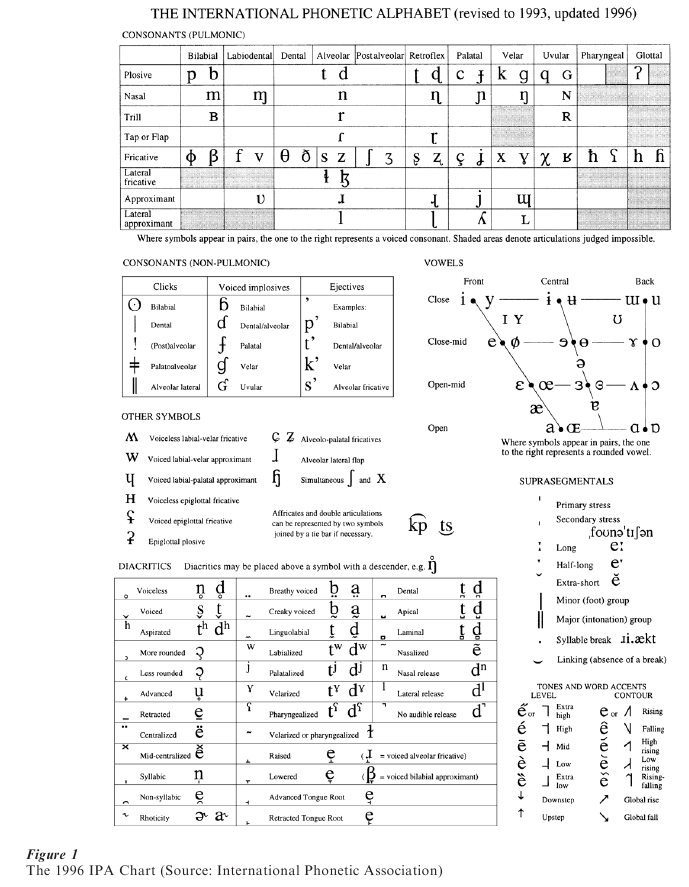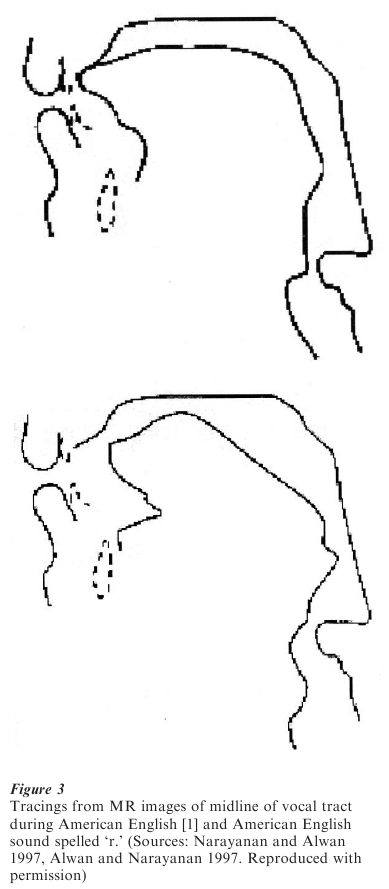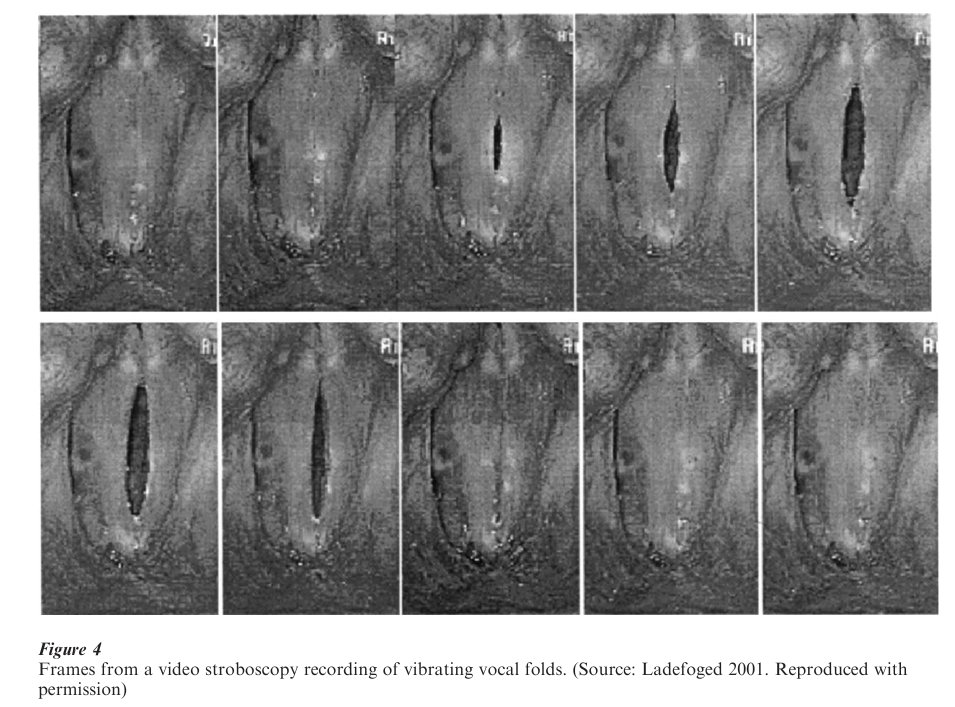Sample Articulatory Phonetics Research Paper. Browse other research paper examples and check the list of research paper topics for more inspiration. If you need a religion research paper written according to all the academic standards, you can always turn to our experienced writers for help. This is how your paper can get an A! Feel free to contact our research paper writing service for professional assistance. We offer high-quality assignments for reasonable rates.
Articulatory phonetics is the branch of phonetics concerned with describing the speech sounds of the world’s languages in terms of their articulations; that is, the movements and/or positions of the vocal organs (articulators). There were independent early Sanskrit, Arabic, and Western European traditions of articulatory description, often motivated by a desire to preserve pronunciations of an earlier stage of a language, e.g., for ritual purposes. More recently, it flourished in the nineteenth century, motivated by such goals as spelling reforms, dictionary making, language teaching, and language and dialect description, and continues in this tradition to the present.
Academic Writing, Editing, Proofreading, And Problem Solving Services
Get 10% OFF with 24START discount code
1. Phonetic Transcription
A system for articulatory phonetic description comprises the set of vocal organs deemed to be important for speech, and the set of their movements or positions capable of characterizing the various speech sounds. A. M. Bell’s Visible Speech (1867), a speech teaching aid for the deaf, used quasi-iconic phonetic symbols to notate positions of the lips, tongue, and soft palate. However, the most influential system of articulator based notation has been that of the International Phonetic Association (IPA), founded in 1886. In the IPA system, the symbols are not articulatorily iconic, being instead based on Roman letters, but they encode a well-developed system of articulatory description.
1.1 International Phonetic Alphabet
The articulators specified in the IPA system are the lungs, the larynx, the two lips, the upper surface of the oral cavity from the teeth back to the uvula (divided into alveolar ridge, hard palate, and soft palate), the uvula, the pharynx and epiglottis, the tongue (divided into the tip, blade, front, back, root, and sides), and the vocal folds (or cords). These are divided conveniently according to their functions in speech as follows.
Respiratory (or initiatory): The respiratory system provides an outward pulmonic airstream with a roughly constant pressure; however, since other articulators, such as the larynx, can also be used to initiate airflow, this is sometimes also called, more generally, the airstream process. Sounds are described in terms of the source and direction of movement of their airstream.
Phonatory: Vibration of the vocal folds (which, with their control structures, lie inside the larynx) modulates the pulmonic airstream to produce a sound source called voicing; the rate of this vibration is perceived as the pitch of the voice, and the mode of vibration is perceived as voice quality. Sounds are described in terms of the presence absence, and if present, the quality, of voicing; larger spans of speech are described in terms of the pitch of voicing (e.g., tones, intonation).
Articulatory (in a narrower sense): Structures above the larynx, including the pharynx walls, the tongue (and its subparts), the jaw, the velum (or soft palate— sometimes classified separately as the oro-nasal process), the uvula, and the lips, which move within the vocal tract to modify the shape, and therefore the resonances, of the airway. In addition, stationary articulators—upper teeth and hard palate (and its subparts)—provide contact sites for these movable articulators. Within a given sound, the articulators may be classified as active vs. passive, with the active articulators moving toward the passive and often forming a constriction or narrowing along the vocal tract. (While stationary articulators are necessarily passive, movable articulators may be active or passive.) For most sounds, the extreme or target positions of the active articulators relative to the passive are taken to suffice to characterize the sounds. For example, labiodental means active lower lip to passive upper teeth; velar means active tongue body to (presumably) passive soft palate (the velum); a front vowel has the tongue as a whole to the front, relative to the surface of the palate. These locations must be further qualified according to how close the articulators come together. For example, in a stop consonant, they touch, whereas in a vowel they are still relatively far apart. These two dimensions of the location of the active articulator are sometimes called the location or place, vs. the degree, stricture, or manner, of the constriction.
The IPA uses these articulatory dimensions (and others not presented here) both to describe speech sounds, and as a basis for defining phonetic symbols to represent those sounds. These dimensions serve as a row and column labels on the well-known IPA chart, the most recent (1996) version of which is reproduced here as Fig. 1. This chart comprises two consonant charts, a vowel chart, and lists of other symbols. Each symbol represents the combination of articulatory properties expressed by the row and column labels of its chart. Square brackets are usually used to show that a symbol is part of a phonetic alphabet. Thus the first symbol on the IPA chart, [p], represents a bilabial (column label—made with the two lips approaching each other) plosive (row label—an oral stop; i.e., made with complete closure between the active and passive articulators, and the soft palate raised to prevent nasal airflow) which is voiceless (leftmost symbol in its cell—made without vocal fold vibration).

The consonant chart can be seen as a grid representing the articulatory space, with sounds made in the front of the mouth located toward the left of the chart, and sounds made in the throat (pharynx) located toward the right of the chart, and the degree of openness of the vocal tract given from top to bottom of the chart. The vowel chart’s layout also gives a similar articulatory grid. However, rather different articulatory descriptions are given for consonants vs. vowels, even when the same articulators are involved, as can be seen from the different row and column labels. The basic descriptive dimensions for vowels are the overall vertical and horizontal position of the active articulator (the tongue), and the position of the lips. While the position of the tongue is judged implicitly relative to passive structures, these are not referred to overtly; only the active articulator, the tongue, is discussed. Thus what might be called a ‘close palatal vowel with bilabial approximation’ is instead nowadays generally called a ‘high (close) front rounded vowel.’ Not all phonetic systems make this kind of functional differentiation of vowel vs. consonant articulations, and the issue remains controversial.
The IPA system aims to provide a symbol for every phoneme of every language. However, it is a crucial property of this system that the descriptive framework is independent of the particular symbols chosen to fill the cells; other symbols could be substituted for these as long as they were defined appropriately, and the charts provide places for sounds that, while possible, have not been assigned symbols.
For further explication of this chart and the IPA system, including its resources for description of suprasegmental phonetics and of the range of speech sounds found in the world’s languages, see the Handbook of the International Phonetic Association (IPA 1999), a phonetic textbook such as Ladefoged (2000), or a phonetics chapter such as that in Fromkin (2000). For more on how these and other articulatory dimensions can be used to classify speech sounds.
1.2 Nonsegmental Transcription
Speech tends to consist of alternating closings (significant constrictions) and openings of the vocal tract; these are called consonants and vowels respectively. It is a fundamental observation that the actions of the various articulators are somewhat asynchronous. That is, it is generally not the case that all the articulators move into and hold their positions for one sound, then move into and hold their positions for the next sound, and so on. The dominant traditions of phonetic description, including the IPA, assume that speech consists of sequences of separate speech segments whose diverse articulations can overlap in time. It is possible to represent much of this overlap with a phonetic alphabet (e.g., Kelly and Local 1989) but it requires cumbersome use of diacritical markings around the alphabet symbols. In contrast, competing articulatory phonetic systems do not bundle the articulatory properties into separable but overlapping segments, nor do they assign phonetic symbols to such segments. Instead, they try to record the temporal articulatory patterns of speech by using more complex representations (see, e.g., Anderson 1985).
2. Study Of Articulation
In most systems for articulatory phonetic description, both the identities of the articulators in general, and their positions in particular sounds are often presented in terms of static diagrams based on side-view X-rays or other images. Figure 2 gives a Magnetic Resonance image (MRI) of the vocal tract (the part of the body used in sound production), along its midline, of a speaker of American English making the fricative consonant[s]. This scan shows the larynx, the pharynx, the tongue, and the oral cavity, along with some other landmarks. Figure 3 shows tracings of the tongue and other relevant structures made from other MRI images of the same speaker, but in this case during the English lateral approximant consonant [l] (which looks similar to [s]) and the English central approximant consonant spelled ‘r’ (a sound with an unusual tongue shape found in few of the world’s languages). Note that, though such pictures are static, that does not mean that the articulations are necessarily held for any appreciable length of time in real speech—think of this as the frame, from a movie, which shows the most extreme displacement. In some sounds, such as stop consonants, articulations are held; in others, such as trills, movements of articulators are crucial to sound production. Direct evidence about other aspects of speech articulation can be gained using other laboratory techniques, from those dating to the nineteenth century and earlier, to the latest medical advances. For example, Fig. 4 shows successive frames from a video recording of vocal fold vibration taken with a video stroboscope.

Much of the current effort in articulatory data collection is focused on model building. Models vary in their physicality (whether they model the movements of realistic structures controlled by muscles, or whether they perform more abstract tasks), but all seek to gain insight into the kinematic and dynamical behavior of speech, either as an instance of refined motor control, or as an important part of language.

Articulatory activity ultimately serves the acoustic ends of sound production and propagation. Each speech sound has its defining acoustic properties that result from its defining articulatory properties. The different configuration of articulators define different resonance patterns of sounds, and interruptions and modifications of the airstream differentiate sounds in other ways. Static articulatory data, especially 3-D imaging of the entire vocal tract, is used in building models of the relation of articulation of acoustics— how the articulatory positions determine the acoustic properties. Models such as those of Fant (1960), and now Stevens (1998), can be applied in articulatory synthesis of speech. There is some effort to recover articulatory phonetic information from acoustic signals so that it can be used in speech recognition systems.

Bibliography:
- Anderson S R 1985 Phonology in the Twentieth Century. University of Chicago Press, Chicago, IL
- Bell A M 1867 Visible Speech. Simpkin, Marshall and Co., London
- Fant G 1960 Acoustic Theory of Speech Production. Mouton, The Hague, The Netherlands
- Fromkin V A 2000 Phonetics. In: Fromkin V A (ed.) Linguistics: An Introduction to Linguistic Theory. Blackwell, Oxford, UK, Chap. 11
- IPA (International Phonetic Association) 1999 Handbook of the International Phonetic Association: A Guide to the Use of the International Phonetic Alphabet. Cambridge University Press, Cambridge, UK
- Kelly J, Local J 1989 Doing Phonology: Observing, Recording, Interpreting. Manchester University Press, Manchester, UK
- Ladefoged P 2000 A Course in Phonetics, 4th edn. Harcourt Brace College Publishers, Fort Worth, TX
- Stevens K N 1998 Acoustic Phonetics. MIT Press, Cambridge, MA




